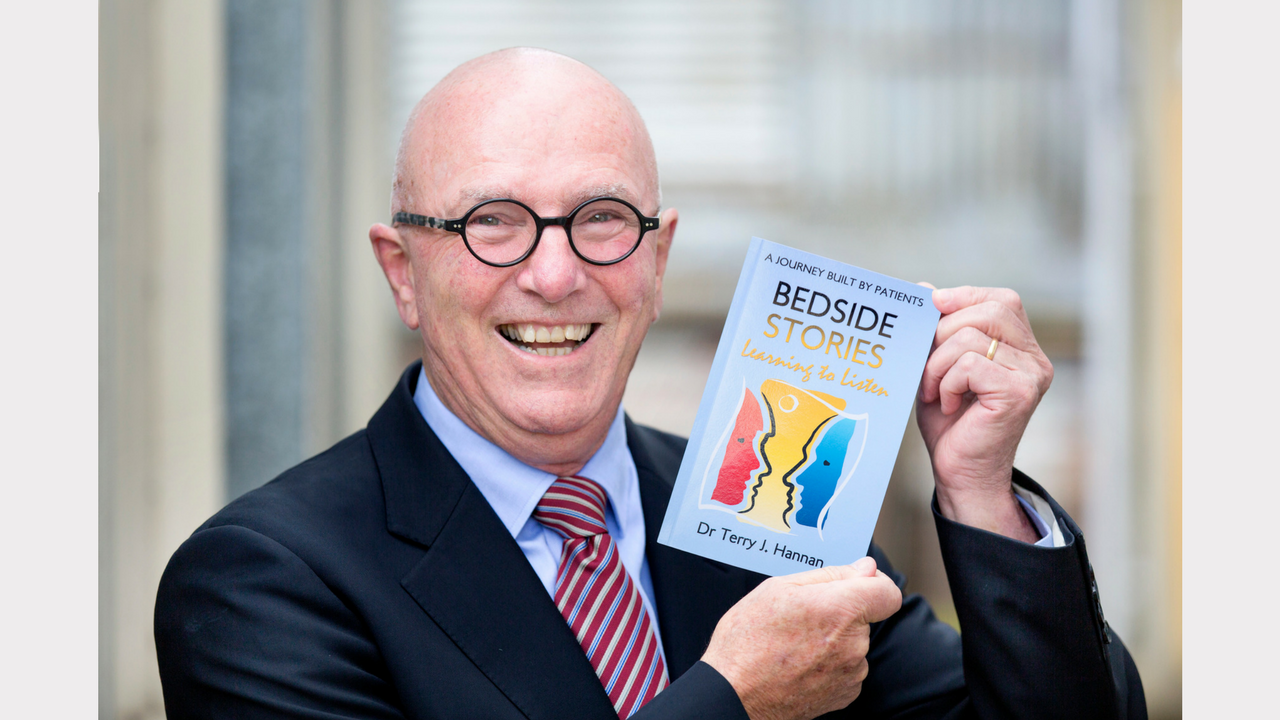Bedside Stories – Learning to Listen
Bedside Stories – Learning to Listen
by Maddison Gregor
Wednesday, February 07, 2018
As a physician and clinical educator, Dr Terry Hannan believes the art of ‘listening to the patient’ is virtually lost in modern medicine. In Dr Terry Hannan’s latest book, Bedtime Stories, he writes a collection of patient journeys highlighting the depths that can occur during the distress of people with a life limiting illness. Bedtime Stories is engaging, inspiring and most importantly teaches us the power of listening to allow a patient to reach the acceptance of mortality.
Dr Terry Hannan took time out to speak with Palliative Matters.
Can you tell us about yourself and some of your highlights from your 45 year career as a physician in palliative care?
Based on a somewhat inconspicuous childhood background, I managed to graduate in Medicine in 1971. So, when I acquired my FRACP in 1975 I felt I had achieved all that was required as a person.
Without a full public hospital appointment, I drifted through general medicine, perioperative medicine, chronic pain management and ‘fell’ into one of the earliest palliative care physician appointments at Calvary Hospital Kogarah. In many ways my general physician experiences were ideally suited to palliative care.
It was during my 12 plus years as a palliative physician there was (unrecognised by myself) a merging of French Jesuit spirituality education with something even more important. This was the inspiration from Viktor Frankl’s writings from the concentration camps in Nazi Germany. The book titles, The Doctor and the Soul and Man’s Search For Meaning, reflect to me, a beautiful understanding of humanity. The book has chapters on the meaning of life, the meaning of death and the meaning of suffering. In the hopelessness of the concentration camp, Frankl also defines clearly the arguments against euthanasia.
Managing patients in the terminal phases of their lives gave me a fusion of experiences that made me see the uniqueness of each individual patient at a level beyond what I thought I was doing before this time.
What inspired you to write the book Bedtime Stories and to document patient journeys?
The uniqueness of death and dying for each individual person when revealed in conversations at the bedside is close to the most ultimate human experiences. It reveals that suffering, pain, anger loss, dependency, etc., are some of the most beautiful emotions humans can share. The ‘effective’ management of these states of human existence brings rewards greater than any Olympic dream.
It was in the daily immersion in these conversations that I became more human. I confronted my own death and dying and allowed the recipient of my presence, the patient/client, to safely expose their final journey of ‘letting go’.
This desire to write on human suffering was cemented during my six years in Kenya where I was involved in a not-for-profit eHealth project designed to manage the HIV/AIDS epidemic affecting 40 million people in Sub-Saharan Africa.
What was the process for retrieving the information from the patients and writing about them?
The process is one of listening to the patient, not what I felt they should hear. As the stories and the healing evolved in these many situations I felt I had been invited into the souls of these unique persons.
Writing them down was a natural way not to lose them from my memory because they are so amazingly powerful. They were part of my journey.
What were your key goals and intentions of the book, and how do you feel about your achievement of this?
Because of the ongoing stories, I now apply my listening more intensely to all my patients and began to document another group of patients - those with post-war trauma and stress. Over time I just kept writing them down as part of my clinical history. The book evolved as an evolutionary sequence of my publishing two earlier book on my sabbatical travels in Italy and Chile.
The actual creation of the stories into Bedside Stories came as I had just finished editing my second book on a small Pacific Island and the idea to merge the stories came as a random mental thought.
Why do you think it is important for people to read and understand different patient journeys?
As a physician and clinical educator, the art of listening to the patient is virtually lost in modern medicine within the formats of undergraduate education and the overwhelming influence of health technology as providing all the medical care answers. For palliative care and elsewhere in health care pain management, I think it is poorly taught and implemented. This can be added to the retention of hierarchical health care and a ‘me’ focus of human interactions which means those delivering care have enormous difficulty in confronting death and dying. At the dying patient’s bedside, I often teach that the individuals with the biggest problems are the clinicians administering the care.
Your book has had many great reviews, why do you think people are gravitating towards it and are there plans for a sequel?
I cannot explain them. Maybe I am a listener and empowering the patients and their carers. Regardless of the reasons, I feel the patients are finally being heard, again.
I will immerse myself into this amazing experience of publishing and see where I stand at the end or in calmer waters.
Bedside Stories – a journey built by patients is available for purchase as an e-book in Kindle or print on demand from Amazon.
